The 5 mass extinction events that shaped the history of Earth — and the 6th that's happening now
The death of the dinosaurs was just one of five global events that saw millions of species wiped out. How do these events happen? And how can we stop it happening again?
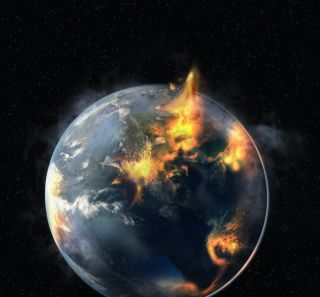
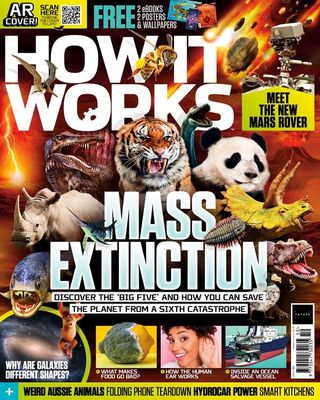
This article is brought to you by How It Works.
How It Works is the action-packed magazine that's bursting with exciting information about the latest advances in science and technology, featuring everything you need to know about how the world around you — and the universe — works.
For the last 10,000 years, Earth has been in the midst of yet another extinction event that is rapidly removing animals from our planet.
Scientists define a mass extinction as around three-quarters of all species dying out over a short geological time, which is anything less than 2.8 million years, according to The Conversation. Right now, humans find themselves at the beginning of the latest mass extinction, which is moving much faster than any of the others. Since 1970, the populations of vertebrate species have declined by an average of 68%, and currently more than 35,000 species are considered to be threatened with extinction, according to the International Union for Conservation of Nature (IUCN). During the 20th century alone, as many as 543 land vertebrates became extinct, according to a research article in the journal PNAS.
Are humans to blame?
Ever since the beginning of the pollutant-pumping industrial revolution in 1760, humans have been the main contributor to Earth's current environmental crisis. From greenhouse gas emissions and ozone depletion to deforestation, plastic pile-up and the illegal animal trade, humans have actively stripped the world of some species and threatened many more.
There are those who argue that climate change and the extinction of animal species are a natural part of life, and in some ways that’s true. After all, the first five mass extinctions occurred without the presence of humans. However, the difference is the speed at which these mass extinctions happen.
Fossil records don't just tell us what creatures existed before us, but also how long a species can naturally survive before becoming extinct without human interference. This is referred to as the background rate, and it is equal to around one species extinction per 1 million species per year. Currently, because of human activity, the actual background rate is tens of thousands of times higher, meaning species are becoming extinct much faster than they should be. Studies have found that some species lost from Earth would have continued to survive for 800 to 10,000 years without the interference of human activities, according to a study published in the journal Science Advances.
Pandemic perspective
Never before has the world been able — if not forced — to take a step back from normal life and give nature the breathing room it needs. 2020's lockdowns have led to a 17% global decrease in carbon emissions and a 20% fall in nitrogen oxide levels, according to NASA. Waterways cleared up, and animals were seen venturing into cities and towns around the world. While it seems like a wonderful revival for the planet, it's a temporary one as human civilization returns to normal and extinctions return to their previous rate.
Ecotourism is an industry that fuels conservation efforts worldwide, but it's been on the verge of collapse since global travel restrictions were imposed. Without the income from tourists, conservationists are having trouble protecting vulnerable species from poaching, which during the pandemic has been on the rise, The New York Times reported. Rhinos in Botswana, wild cats in South America and tigers in India have all been targeted over the last year.
The 5 mass extinctions
Ordovician-Silurian extinction: ~ 440 million years ago
Species made extinct: 85%
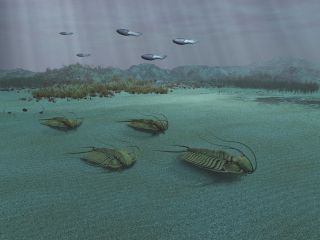
The first mass extinction on Earth occurred in a period when organisms such as corals and shelled brachiopods filled the world's shallow waters but hadn't yet ventured onto land. Life itself was beginning to spread and diversify, having first emerged around 3.7 billion years ago. But about 440 million years ago, a climatic shift caused sea temperatures to change, and the majority of life in the ocean died.
At the end of the Ordovician period, a rapid onset of mass glaciation covered the southern supercontinent, Gondwana. Glaciation on this scale locked away high percentages of the world's water and dramatically lowered global sea levels, which stripped away vital habitats from many species, destroying food chains and decreasing reproductive success, according to a study published in the journal Oceanology.
It is not known exactly what triggered these events. One theory is that the cooling process may have been caused by the formation of the North American Appalachian Mountains, according to Ohio State news. Large-scale erosion of these mountainous silicate rocks is associated with the removal of the greenhouse gas carbon dioxide from the atmosphere.
Not all scientists agree with this, however. Alternative theories suggest that toxic metal may have dissolved into ocean waters during a period of oxygen depletion, wiping out marine life, according to National Geographic. Other scientists suggest that a gamma-ray burst from a supernova ripped an enormous hole in the ozone layer, allowing deadly ultraviolet radiation to kill life below, according to APS News, and another theory suggests that volcanism was the cause, according to a study published in the journal Geology.
Late Devonian extinction: ~ 365 million years ago
Species made extinct: 75%
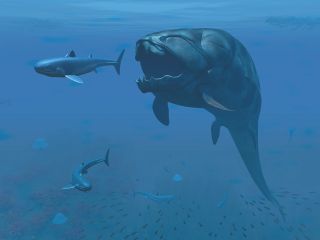
Often referred to as the "age of fish," the Devonian period saw the rise and fall of many prehistoric marine species. Although by this time animals had begun to evolve on land, the majority of life swam through the oceans. That was until vascular plants, such as trees and flowers, likely caused a second mass extinction, according to a 1995 study published in the journal GSA Today.
As plants evolved roots, they inadvertently transformed the land they lived on, turning rock and rubble into soil, according to the BBC. This nutrient-rich soil then ran into the world's oceans, causing algae to bloom on an enormous scale. These blooms essentially created giant "dead zones," which are areas where algae strips oxygen from the water, suffocating marine life and wreaking havoc on marine food chains. Species that were unable to adapt to the decreased oxygen levels and lack of food died.
This theory, however, is debated, and some scientists believe that volcanic eruptions were responsible for the decrease in oxygen levels in the ocean, according to a study in the journal Geology.
One sea monster that was wiped from the world's oceans was a 33-foot-long (10 meters) armored fish called Dunkleosteus. A fearsome predator, this giant fish had a helmet of bone plates that covered its entire head and created a fang-like cusp on its jaw.
Permian-Triassic extinction: ~ 253 million years ago
Species made extinct: 96% marine life; 70% terrestrial life
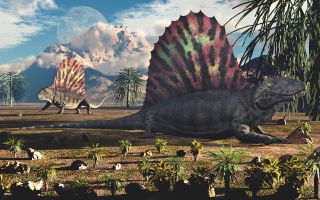
This extinction event, often referred to as the "Great Dying," is the largest to ever hit Earth. It wiped out some 90% of all the planet's species and decimated the reptiles, insects and amphibians that roamed on land. What caused this catastrophic event was a period of rampant volcanism, Live Science previously reported. At the end of the Permian period, the part of the world we now call Siberia erupted in explosive volcanoes. This released a large amount of carbon dioxide into the atmosphere, causing a greenhouse effect that heated up the planet. As a result, weather patterns shifted, sea levels rose and acid rain beat down on the land.
In the ocean, the increased levels of carbon dioxide dissolved into the water, poisoning marine life and depriving them of oxygen-rich water, according to the Sam Noble Museum in Oklahoma. At the time, the world consisted of one supercontinent called Pangaea, which some scientists believe contributed to a lack of movement in the world's oceans, creating a global pool of stagnant water that only perpetuated carbon dioxide accumulation. Rising sea temperatures also reduced oxygen levels in the water, Live Science previously reported.
Corals were a group of marine life forms that were among the worst affected — it took 14 million years for the ocean reefs to rebuild to their former glory.
Death by volcano
How massive eruptions caused the biggest mass extinction on Earth
Triassic-Jurassic extinction: ~ 201 million years ago
Species made extinct: 80%
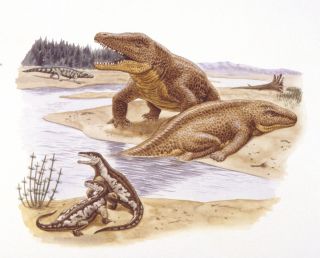
The Triassic period erupted in new and diverse life, and dinosaurs began to populate the world. Unfortunately, numerous volcanoes also erupted at that time. Although it remains unclear exactly why this fourth mass extinction occurred, scientists think that massive volcanic activity occurred in an area of the world now covered by the Atlantic Ocean, according to MIT News. Similar to the Permian extinction, volcanoes released enormous amounts of carbon dioxide, driving climate change and devastating life on Earth. Global temperatures increased, ice melted, and sea levels rose and acidified. As a result, many marine and land species became extinct; these included large prehistoric crocodiles and some flying pterosaurs.
There are alternative theories explaining this mass extinction, which suggest that rising carbon dioxide levels released trapped methane from permafrost, which would have resulted in a similar series of events, according to Discover magazine.
K-Pg extinction: ~ 66 million years ago
Species made extinct: 75%
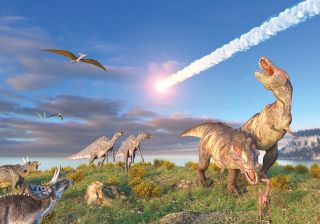
The most famous of all the mass extinction events is the Cretaceous-Paleogene extinction — better known as the day the dinosaurs died. The event is sometimes also known as the K-T extinction, and geologists call it the“K-Pg extinction because the letter "C" is shorthand for a previous geological period called the Cambrian. The "K" is from the German word "Kreide," which means "Cretaceous."
Crash-landing into what is today Yucatán, Mexico, an asteroid over 8 miles (13 kilometers) wide plunged into Earth at around 45,000 mph (72,000 km/h). This punched a hole 110 miles (180 km) wide and 12 miles (19 km) deep, called the Chicxulub crater. The impact would have scorched all the land around it within 900 miles (1,450 km) and ended the 180 million-year reign of the dinosaurs on Earth.
What followed the impact were months of blackened skies caused by debris and dust being hurled into the atmosphere, Live Science previously reported. This prevented plants from absorbing sunlight, and they died out en masse and broke down the dinosaurs' food chains. It also caused global temperatures to plummet, plunging the world into an extended cold winter. Scientists estimate that most extinctions on Earth at the time would have occurred in just months after the impact. However, many species that could fly, burrow or dive to the depths of the oceans survived. For example, the only true descendants of the dinosaurs living today are modern-day birds — more than 10,000 species are thought to have descended from impact survivors.
Deep impact
How an asteroid brought about the end of the world for the dinosaurs
Turning back the clock

Humans might be the driving force behind this accelerated extinction event, but we are also the answer to stopping it. The world is awash with scientists, conservationists and environmentalists working in the laboratory, in conservation areas and in political battlegrounds to protect endangered species.
From tackling global pollution emissions in the 2016 Paris Agreement to the U.K.'s Global Resource Initiative that combats deforestation, legislation will always be at the forefront of the fight against mass extinction. In particular, one of the biggest direct threats to endangered life is the illegal animal trade.
In the wake of the current pandemic, wildlife markets have been thrust into the spotlight as not only being environmentally irresponsible, but potentially dangerous to human health through zoonotic diseases — those that jump from animals to humans — such as COVID-19. These markets, trading live exotic animals or products derived from them, are found throughout the world. For example, bear farms in Asia cage 20,000 Asiatic black bears for their bile, resulting in the decline of the wild population, according to Animals Asia.
Lawmakers are tackling these kinds of markets with growing success. In Vietnam, for example, Prime Minister Nguyen Xuân Phúc signed a new directive that bans wildlife imports and closes illegal wildlife markets, according to a report in The Guardian.
New eyes in the sky
One of the best ways to help prevent species from becoming extinct is to monitor their populations and identify any problems before it's too late to help. Currently camera traps and surveys conducted on foot or from aircraft are the main method of data collection. However, recent research has used a combination of satellite imagery and artificial intelligence to observe animals from space. Using high-resolution aerial photographs of Africa’s grasslands, researchers created an algorithm to sweep over thousands of miles and count every elephant pictured in the blink of an eye.
The technology, however, is still in its infancy and is limited to areas where large animals, such as elephants, aren’t obscured by forest habitats. "The main question here would be the size of the animals and their habitats. We can’t see through clouds, obviously, but also we can’t see through forested areas. Therefore we can’t look for animals that are in dense forest," Olga Isupova, a computer scientist at the University of Bath and creator of the elephant-tracking AI, told How It Works magazine, a sister publication to Live Science. "If they’re in open areas, then it’s just a question of their size."
Nevertheless, it has huge potential to advance our ability to monitor species. “We are currently looking at how we can improve the algorithm itself to look specifically for smaller objects. We could also look for those animals who appear in herds,” Isupova said. “For example, with penguin colonies, the model can detect the whole colony and then have an additional algorithm that approximates the count based on the size of the colony. Also, you can look for the footprints of the animals. The animal itself can be quite small, but if there are many of them and they leave lots of footprints after them, we can also try to track that.”
Read More: Elephants counted from space using satellites and AI
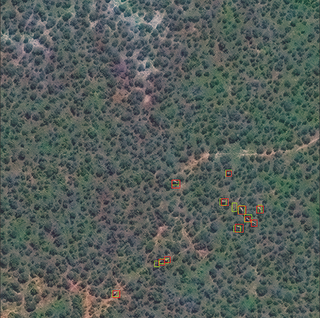
Saved by cloning
Another potential solution to combat extinction could be to clone species. In February 2021, scientists revealed they had successfully cloned a black-footed ferret from an animal that had died more than 30 years ago. Native to North America, these small mammals were thought to be extinct until a small colony was found in the early 1980s, which were entered into a breeding program and reintroduced around the United States.
Due to inbreeding, the population of around 650 ferrets is at risk of extinction once again. This inspired researchers to create a genetic copy from the preserved cell of a wild female, named Willa, who died in the 1980s. The process of cloning was similar to that used to clone Dolly the sheep back in the early 1990s. Scientists hope that after time spent in captivity, cloned members of the species can successfully re-enter the wild, offering a new conservation tool to protect endangered species.
Read more: Endangered black-footed ferret cloned for the first time
It is legal, scientific and technological advances such as these that will help to conserve Earth's wildlife and hopefully slow down the sixth mass extinction.
Sign up for the Live Science daily newsletter now
Get the world’s most fascinating discoveries delivered straight to your inbox.

Scott is a staff writer for How It Works magazine and has previously written for other science and knowledge outlets, including BBC Wildlife magazine, World of Animals magazine, Space.com and All About History magazine. Scott has a masters in science and environmental journalism and a bachelor's degree in conservation biology degree from the University of Lincoln in the U.K. During his academic and professional career, Scott has participated in several animal conservation projects, including English bird surveys, wolf monitoring in Germany and leopard tracking in South Africa.